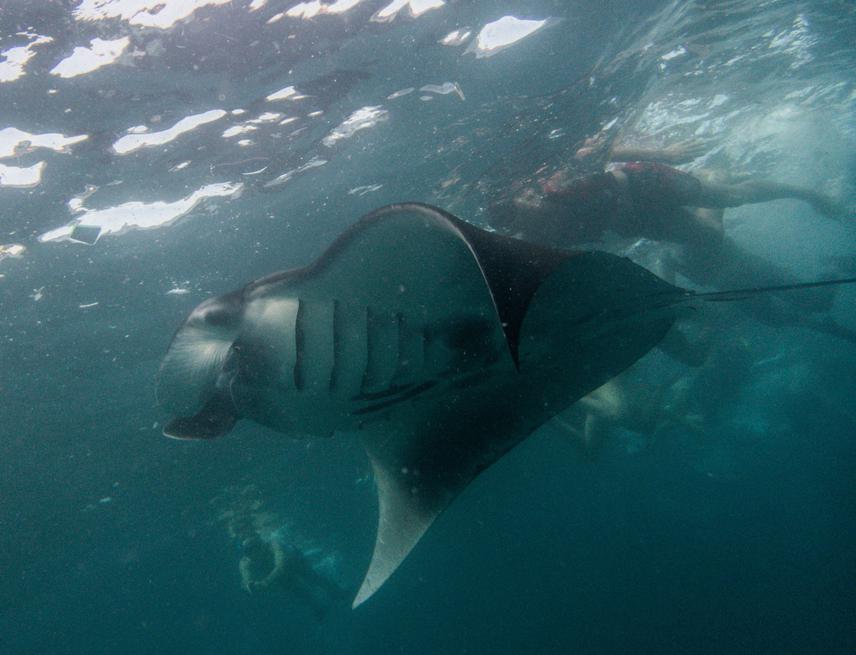Janis Argeswara
Other projects
5 Jan 2022
Conservation of Threatened Manta Rays in a Key Reproductive Habitat – Nusa Penida MPA, Indonesia
Manta rays are threatened with extinction, and a better understanding of manta ray reproductive ecology is necessary for their conservation. Studies on reproduction are limited, and little information exists on birth and growth rates and the habitats used by the young. The Nusa Penida Marine Protected Area (MPA) is located within the world’s richest marine biodiversity region, the Coral Triangle.

Male reef manta ray at Manta Bay with snorkelers swimming behind it. This shows how busy and unethical some tourists may act when encountering with marine megafauna and the need of educated tour guides to give proper briefing before snorkelling.
The park has two key manta ray aggregation sites - Manta Bay and Manta Point – also known as tourism hotspots. Our previous study (Germanov et al., 2019) shows that Manta Bay is primarily where immature male individuals are most found and is mainly used for feeding. The second site, Manta Point, is where both female and male adults are most seen and is mainly used for cleaning and social interactions, such as courtship and mating. Male manta rays are classified into maturity stages based on the size of their reproductive organs or claspers. However, unlike males, female manta rays are more difficult to classify based on visual clues alone, leaving 43% of female maturity unknown. However, size measurements can be successfully used to classify females into maturity categories. The purpose of this study is to collect the region’s manta rays size measurements and establish birth and growth rates and confirm a rare manta ray nursery. Although the Nusa Penida MPA contains important manta ray habitats, threats from fisheries, pollution, and poor tourism practices persist.
In addition to our study, educational presentations regarding manta rays and the Code-of-Conducts will be given to tourists and local tourism operators, in both English and Bahasa Indonesia. Socialization on how to behave and interact around marine megafauna is important to ensure that tourism does not disturb the animal’s natural habitat and behaviour and that sustainable tourism practices are implemented. Our project will highlight immediate threats to reproductively mature and vulnerable life stages within the MPA to inform better management practices and motivate better stewardship from community stakeholders through education.
Header: The busy condition of snorkelers and boats at Manta Bay, the manta ray feeding ground.